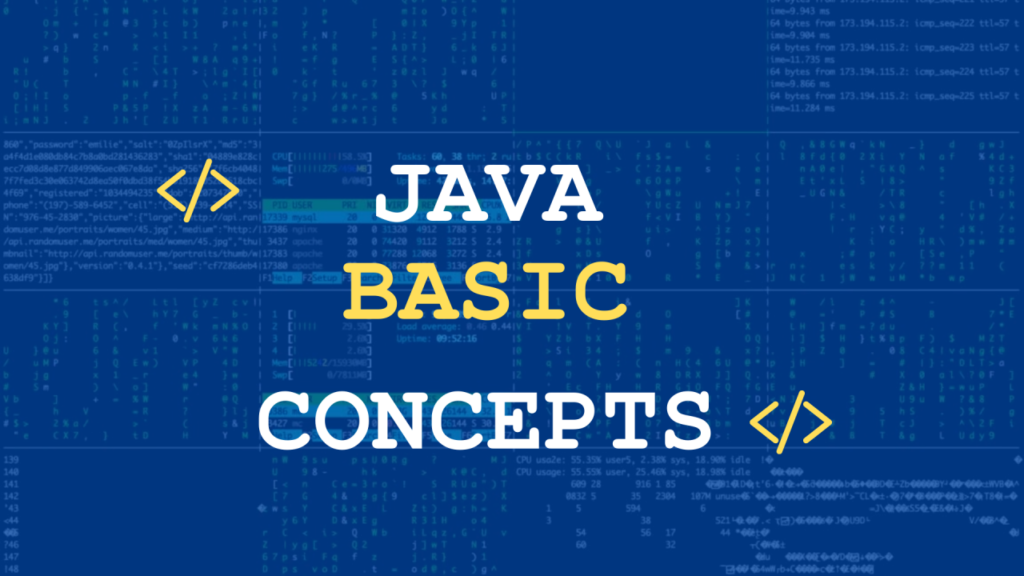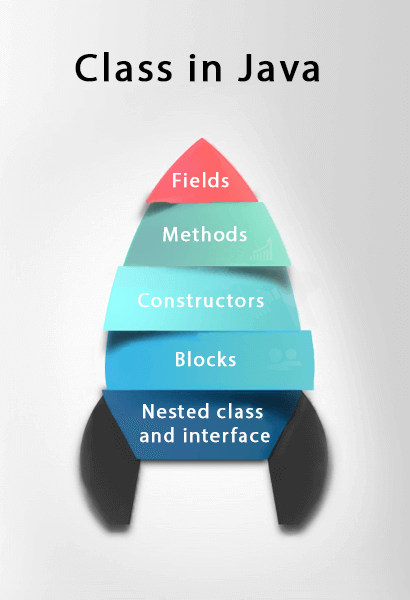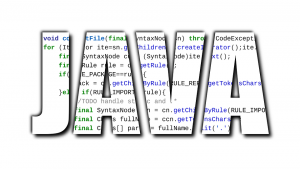Introduction
Java, one of the most popular programming languages, plays a crucial role in both front-end and back-end development. One of the fundamental building blocks in Java is the class. If you’re pursuing a Java Full Stack Developer Course, understanding how to design a class is an essential skill.
In this detailed guide, we’ll walk you through the step-by-step process of designing a class in Java, explaining important concepts, and providing real-world examples. Whether you’re a beginner or an intermediate developer, mastering class design will greatly enhance your programming abilities and set you up for success in your career.
What is a Class?
A class in Java serves as a blueprint or template for creating objects. It encapsulates data for the object and methods to manipulate that data. It defines the properties and behaviors of an object. Every object created from a class is an instance of that class.
For example, imagine you are creating a Student class in a Java Full Stack Developer Course. The class would define the properties of a student (such as name, age, and student ID) and the behaviors (methods like enrolling in a course or updating personal details).
Importance of Class Design in Java
The design of a class is a foundational concept in Java programming, as it directly impacts how objects within an application interact with each other. Whether you’re working on a small project or building a large-scale application as part of a Java Full Stack Developer Course, a well-designed class can significantly improve the quality and maintainability of your code.
Here’s why class design is critical in Java and how it contributes to building better software applications.
Code Maintainability
One of the primary goals of class design is to ensure that the code is maintainable over time. When designing a class, it’s important to consider how easily the code can be modified, extended, or debugged. Poor class design can lead to tightly coupled code, which is difficult to change or enhance. By adhering to object-oriented principles like encapsulation and abstraction, you create classes that are more self-contained and can evolve without impacting other parts of the application.
For example, in a Java Full Stack Developer Course, when working on the back-end, if you design classes such as User or Order, they should handle only the logic related to user data or order management, and not other unrelated aspects like UI rendering.
Reusability of Code
Another key advantage of good class design is reusability. When classes are designed in a modular way with clear responsibilities, they can be easily reused in other parts of the application or even in different projects. This helps in saving time and reducing code duplication.
This reusability also comes in handy when developing large-scale applications, especially in Java Full Stack Developer Course projects, where multiple teams may work on different modules. Having reusable, well-designed classes helps maintain consistency and accelerates development.
Scalability of the Application
In large applications, scalability is a key factor that determines how well the software will perform as it grows. Proper class design plays a pivotal role in ensuring that the application can handle increased traffic or larger datasets without degrading performance.
Scalable class design involves the use of inheritance, polymorphism, and interfaces to allow for the addition of new functionality without modifying existing code. For example, you might design a PaymentMethod interface and have multiple classes like CreditCard, PayPal, or Bitcoin implement this interface. This allows you to scale the payment processing system by simply adding new classes in the future without changing the core logic.
Code Readability and Collaboration
Well-designed classes improve the readability of the codebase. When a class is clearly named and has a single responsibility, other developers can easily understand its purpose and use it accordingly. This is particularly important when working in teams, such as in a Java Full Stack Developer Course, where multiple developers may be working on different parts of the application.
In collaborative environments, clear class design fosters better communication between developers, as they can easily identify and work with classes based on their names and responsibilities. This leads to a more efficient development process.
Fostering Object-Oriented Principles
Java, being an object-oriented language, emphasizes principles such as encapsulation, inheritance, polymorphism, and abstraction. Proper class design is the cornerstone of these object-oriented principles.
Key Concepts in Java Classes

Fields (Variables)
Fields are the variables that hold the state of an object. These variables define the attributes of an object. For example, in a Car class, fields may include make, model, and year. In Java, fields can be declared as private, protected, or public, depending on the level of access control required.
Methods
Methods are functions defined within a class that describe the behaviors of an object. Methods can modify an object’s state or perform operations using its data. For example, a method in a Car class could be startEngine().
Constructors
A constructor is a special method used to initialize an object when it is created. Constructors have the same name as the class and do not have a return type. A constructor can either be a default constructor or a parameterized constructor, depending on whether it accepts arguments.
Access Modifiers
Access modifiers determine the visibility of a class, method, or field. Java provides four types of access modifiers: public, private, protected, and default (no modifier). Choosing the appropriate access modifier is vital for controlling the access level and maintaining the security of your application.
Inheritance
Inheritance is an essential concept in object-oriented programming (OOP). It allows one class to inherit properties and methods from another class. This promotes reusability and reduces redundancy in code. For example, a Car class can inherit from a Vehicle class, gaining access to properties like speed and fuel.
Steps to Design a Java Class
Step 1: Define the Class Name
Every class should have a clear and descriptive name that represents the entity it models. In Java, class names typically use CamelCase. For example, a class representing a customer might be named Customer.
javaCopy codepublic class Customer {
// Class body goes here
}
Step 2: Declare Fields (Variables)
Fields represent the state or attributes of an object. They are declared inside the class, but outside of any method or constructor. Fields should be declared with an appropriate access modifier (private is most common) to ensure encapsulation.
javaCopy codepublic class Customer {
private String name;
private int age;
private String email;
}
Step 3: Create Methods
Methods represent the behaviors of an object. They can manipulate the fields of the class or perform other operations. For example, methods could include actions like updating an address or sending an email.
javaCopy codepublic class Customer {
private String name;
private int age;
private String email;
public void updateEmail(String newEmail) {
this.email = newEmail;
}
public String getEmail() {
return this.email;
}
}
Step 4: Implement Constructors
Constructors are used to initialize objects of the class. In Java, if you don’t define a constructor, the compiler provides a default constructor. However, it’s often useful to define custom constructors that accept parameters.
javaCopy codepublic class Customer {
private String name;
private int age;
private String email;
public Customer(String name, int age, String email) {
this.name = name;
this.age = age;
this.email = email;
}
}
Step 5: Use Access Modifiers
Java provides several access modifiers to control access to class members. The most common modifiers are:
- public: Accessible from anywhere.
- private: Accessible only within the class.
- protected: Accessible within the same package or subclasses.
- default (no modifier): Accessible only within the same package.
By using access modifiers, you can enforce encapsulation and safeguard your class’s internal state.
Step 6: Apply Encapsulation
Encapsulation is the practice of keeping fields private and providing public getter and setter methods to access and modify them. This ensures that class data is accessed in a controlled manner.
javaCopy codepublic class Customer {
private String name;
private int age;
private String email;
public String getName() {
return name;
}
public void setName(String name) {
this.name = name;
}
}
Step 7: Use Inheritance (If Required)
Inheritance is an important principle in object-oriented programming. You can design a class to inherit properties and methods from another class. This reduces redundancy and allows for better organization of your code.
javaCopy codepublic class Employee extends Customer {
private String employeeId;
public String getEmployeeId() {
return employeeId;
}
public void setEmployeeId(String employeeId) {
this.employeeId = employeeId;
}
}
Real-World Example: Designing a Student Class
Let’s take a practical example to design a Student class for a Java Full Stack Developer Course. This class will represent a student with basic attributes like name, studentId, email, and methods like enrollCourse() and getDetails().
javaCopy codepublic class Student {
private String name;
private String studentId;
private String email;
public Student(String name, String studentId, String email) {
this.name = name;
this.studentId = studentId;
this.email = email;
}
public void enrollCourse(String courseName) {
System.out.println(name + " has enrolled in " + courseName + ".");
}
public String getDetails() {
return "Student Name: " + name + ", Student ID: " + studentId + ", Email: " + email;
}
}
This class can be used in applications such as a student management system, where you can create objects of Student, set their details, and enroll them in various courses.
Common Mistakes to Avoid While Designing a Java Class
- Not Using Encapsulation: Directly accessing and modifying fields can lead to issues. Always use getter and setter methods to protect data integrity.
- Overusing Static Methods: Static methods are great for utility functions, but overusing them can lead to poor design. Aim to use object-oriented principles wherever possible.
- Not Following Naming Conventions: Always follow Java naming conventions for class names, method names, and variable names. It helps maintain readability and uniformity across your codebase.
- Not Leveraging Inheritance: Don’t duplicate code across multiple classes. Use Inheritance to reduce redundancy and improve code reusability.
Key Takeaways
- A class is the foundation of object-oriented programming in Java.
- Encapsulation and inheritance are key principles when designing classes.
- Properly using access modifiers ensures better security and data control.
- A Java Full Stack Developer Course can help you master the art of class design and build robust applications.
The class declaration includes these components, in order:
Modifiers. The Class can be public, private or default.
Class name. By convention, it should begin with a capitalized letter. You cannot use Java reserved words. Names can contain numbers.
Superclass (optionally). If your class has a parent, you need to put the name of it after the keyword extends. A class can only extend one superclass.
Interfaces (optionally). If your class implements an interface or interfaces, you need to write them like a comma-separated list after the keyword implements.
Body. The class body is surrounded by braces.
Conclusion
Designing a class in Java is an essential skill for any Java Full Stack Developer. By understanding key concepts such as fields, methods, constructors, encapsulation, and inheritance, you can design robust, scalable, and maintainable classes that serve as the building blocks for larger applications.
A strong foundation in class design is crucial for passing your Java Developer Training and Placement exams and excelling in real-world projects. For those interested in becoming a full-stack Java developer, mastering these concepts will allow you to create complex systems and applications that can scale and evolve over time.
Ready to dive deeper into Java programming? Enroll in our Java Developer Training and Placement program at H2K Infosys and gain hands-on experience to accelerate your career in Java development.




























